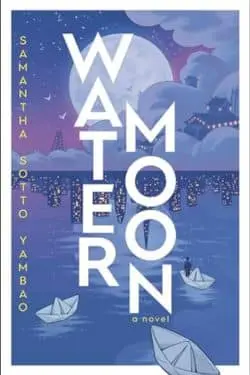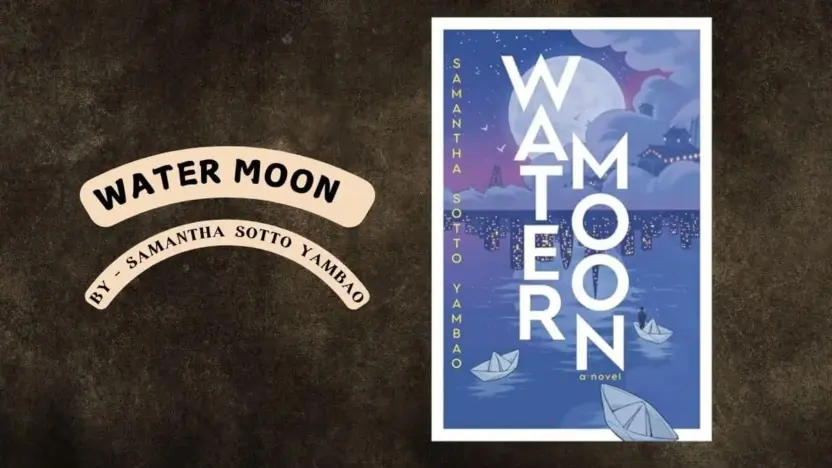“Water Moon” by Samantha Sotto Yambao is a captivating fantasy novel that intertwines elements of magical realism, romance, and adventure. Set against the backdrop of Tokyo, the story introduces readers to a hidden pawnshop where individuals can relinquish their deepest regrets, embarking on a transformative journey that challenges perceptions of choice, destiny, and love.
Plot Overview
The narrative centers on Hana Ishikawa, who inherits her family’s enigmatic pawnshop located in a secluded Tokyo alley. This isn’t an ordinary establishment; it serves as a sanctuary for the lost, offering them the opportunity to pawn their life choices and regrets. On her inaugural day as the proprietor, Hana discovers the shop in disarray, a crucial item missing, and her father vanished without a trace. Amidst this turmoil, she encounters Keishin, a charismatic physicist from another realm, who offers his assistance. Together, they embark on a mystical quest through surreal landscapes—traversing rain puddles, soaring on paper cranes, and exploring night markets in the clouds—to uncover the truth behind her father’s disappearance and the stolen artifact. As their journey unfolds, Hana grapples with a profound secret, leading to choices that could irrevocably alter their destinies.

Themes and Motifs
Regret and Redemption: The pawnshop’s unique service of accepting regrets delves into the human desire to erase past mistakes. This motif explores the consequences of such actions and the intrinsic value of our experiences in shaping identity.
Choice and Destiny: The narrative examines the tension between predetermined paths and free will, prompting readers to reflect on the extent of control over one’s fate.
Love and Sacrifice: Hana and Keishin’s evolving relationship highlights the sacrifices inherent in love and the complexities of intertwining destinies from disparate worlds.
World-Building and Imagery
Sotto Yambao crafts a dreamlike realm reminiscent of Studio Ghibli’s whimsical landscapes. The alternate world is rich with fantastical elements—such as teleporting through puddles and flying on origami cranes—that evoke a sense of wonder and surrealism. This imaginative setting serves as a backdrop for the protagonists’ journey, enhancing the narrative’s ethereal quality.
Character Development
Hana Ishikawa: Initially portrayed as reserved and bound by familial duty, Hana’s character arc reveals a journey toward self-discovery and empowerment. Her internal struggles with secrets and choices add depth to her persona, making her a relatable protagonist.
Keishin: As a man of science thrust into a world defying logical explanation, Keishin’s character embodies curiosity and adaptability. His interactions with Hana provide a balance between skepticism and open-mindedness, enriching their dynamic.
Literary Style
The prose is imbued with lyrical beauty, employing vivid descriptions that transport readers into the heart of the fantastical world. Sotto Yambao’s storytelling seamlessly blends reality with fantasy, creating a narrative that is both thought-provoking and enchanting.
Reception
“Water Moon” has garnered praise for its imaginative storytelling and emotional depth. Reviewers have noted its “whimsically nonsensical yet relatably human” narrative, likening its dreamlike quality to that of Studio Ghibli films. The novel’s exploration of profound themes through a fantastical lens has resonated with readers, making it a standout in contemporary fantasy literature.
Conclusion
“Water Moon” is a testament to Samantha Sotto Yambao’s prowess in weaving intricate tales that transcend the ordinary. Its blend of fantasy, romance, and philosophical inquiry offers a rich reading experience that lingers long after the final page. For those seeking a novel that challenges perceptions while enchanting the imagination, “Water Moon” is an essential addition to their literary collection.
Also Read: Beautiful Ugly: By Alice Feeney (Book Review)



